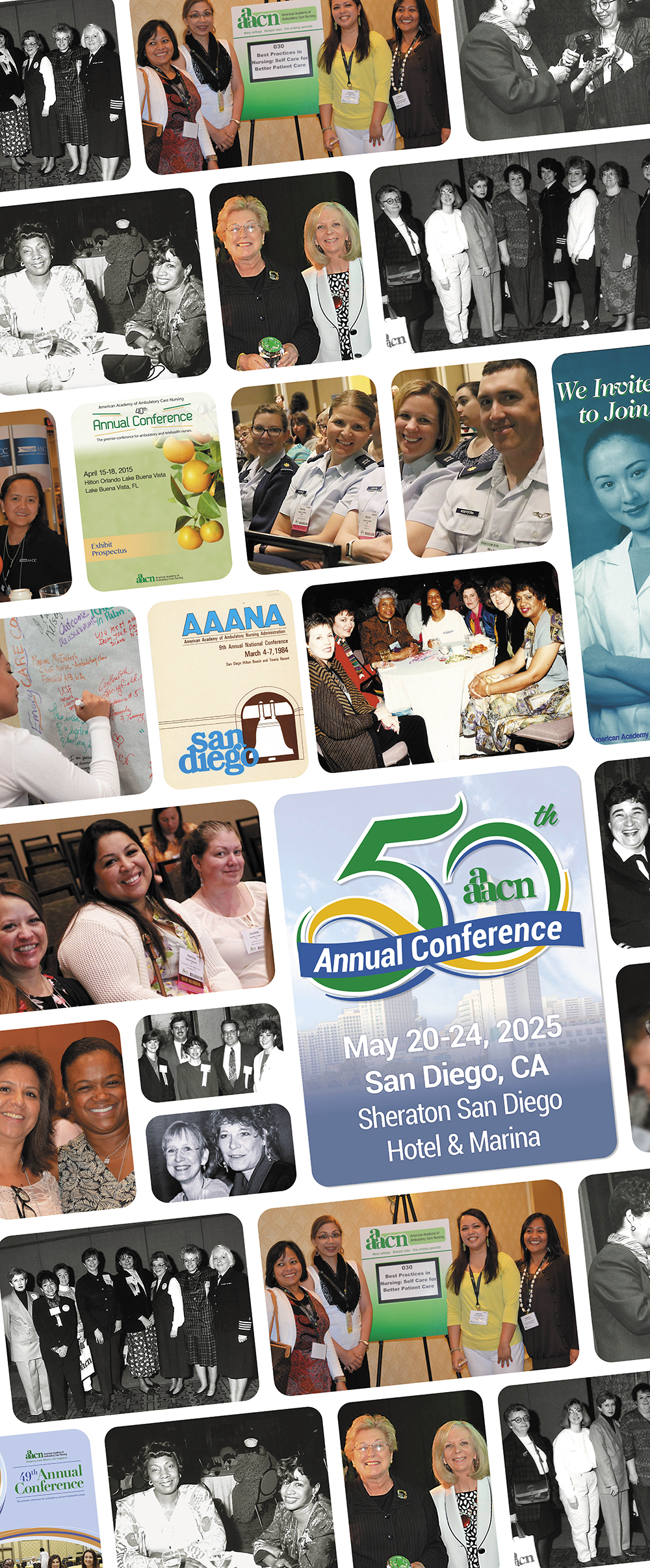Event Date

2025 Annual Conference
May 20-24, 2025
Sheraton San Diego Hotel and Marina
San Diego, CA
Abstract submissions are now being accepted for the 2025 AAACN Annual Conference.
- Poster abstracts are due November 18, 2024;
Presentation of Abstract at Conference
Poster presentation for the conference is comprised of onsite display and virtual display. Poster presenters should be able to commit to BOTH the onsite and virtual requirements listed below for the poster display.
- Onsite poster display: An assigned presentation space and 4-foot-high by 8-foot-wide cork display board will be provided. Format for the poster presentation should include a creative, visual presentation of the abstract content. Poster presenters must be present at their poster display during the dedicated poster presentation times to allow colleagues to ask questions. For the 2025 conference, all posters will be displayed at the same time. Exact times are subject to the final program and will be communicated to presenters. The presenter can be someone other than the primary author but should be a registered nurse qualified to discuss the topic content.
- Virtual poster display: Virtual poster viewing is built into the conference schedule via the AAACN Conference Event Page:
- On-demand poster viewing: On-demand poster viewing is available to all registered
attendees. Presenters provide an electronic file displayed in Adobe Acrobat .pdf format as a visual and a short video recording giving an overview of poster content as a complementary component of their poster display. All registered attendees may review these poster files and poster video recordings as part of their registration access. - Live virtual poster sessions: Live virtual poster sessions are designed specifically for virtual livestreamed attendees to view poster recordings and participate in a text box Q&A chat with invited presenters for contact hour credit.
- On-demand poster viewing: On-demand poster viewing is available to all registered
Level of Presentation
Presentation level is important to the planning process to assure that all learning content levels are represented in the overall program. Using Benner’s From Novice to Expert theory, AAACN has adapted it into three (3) content levels:
- Advanced beginner: Primary focus is on the individual patient and family. Uses decision trees, algorithms, protocols, and evidence-based practice guidelines. Principles, based on experiences, begin to be formulated to guide actions.
- Proficient: More holistic understanding improves decision-making. Able to critically think based on experiences. Advocates for patient and family.
- Expert: Has intuitive grasp of clinical situation. Performance is fluid, flexible, and highly proficient. Incorporates evidence-based resources and nursing research into daily plan of care.
Conference tracks
- Care coordination and transition management: Provides information for nurses who coordinate care and manage transitions of patients among levels of care, providers, and settings.
- Clinical: Tools and strategies for providing or leading care for varied populations in the ambulatory care setting.
- Education: Focuses on enhancing patient care through education. Promotes excellence in nursing practices through initiatives that build an evidence-based pool of knowledge.
- Leadership: Emerging models of leadership, ways to influence outcomes and quality, and experiences integrating new models of care within the fiscally challenged environment to include the changing managed care arena.
- Research: Provides information to build skills to conduct research or disseminate a recent research project with a focus on ambulatory nursing care in any ambulatory care setting with implications for practice.
- Telehealth: Uses the nursing process to provide nursing care and access to health care for individual patients or patient populations using telecommunication technologies.
Need more assistance for creating an abstract?
Past AAACN President, Kathy Mertens talks about tips/tricks to navigate the application process
Event Type
Deadline
